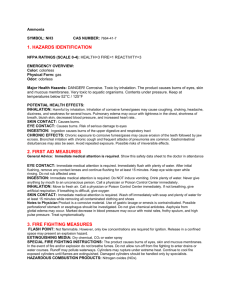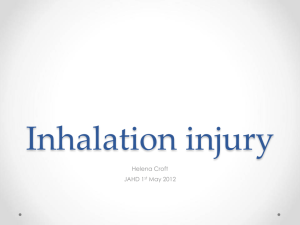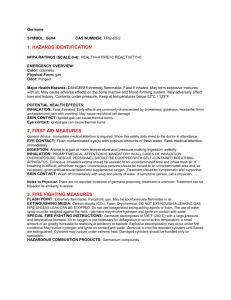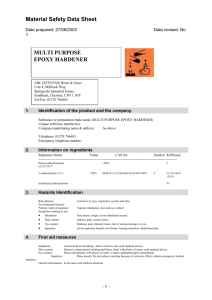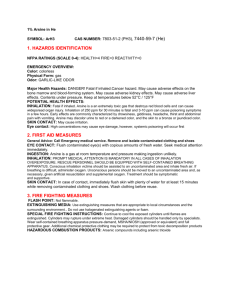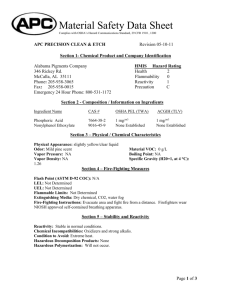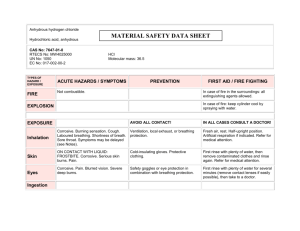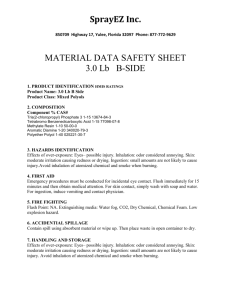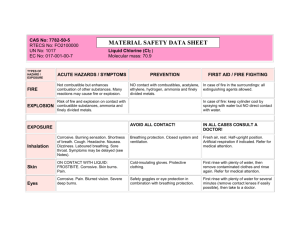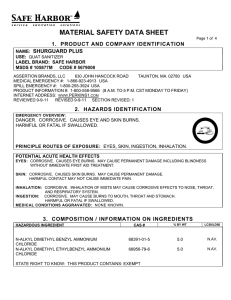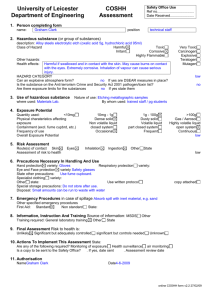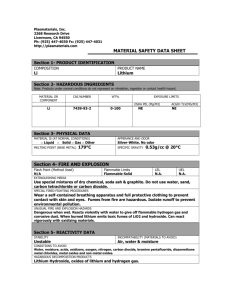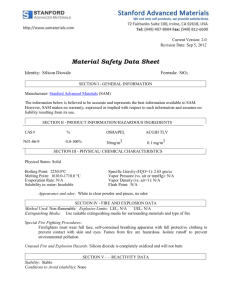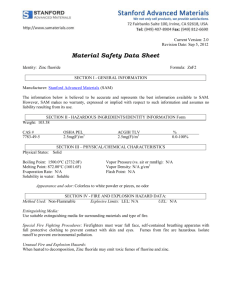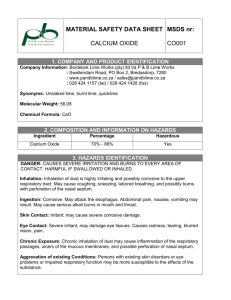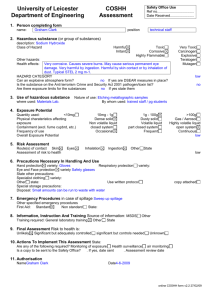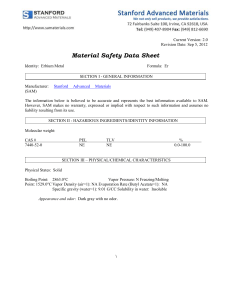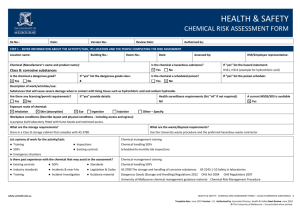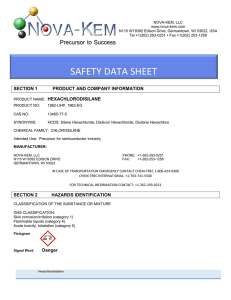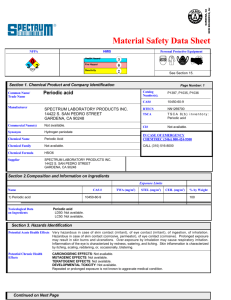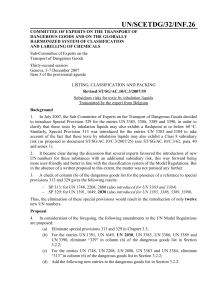Hydrogen Bromide SYMBOL: HBr CAS NUMBER: 10035-10
advertisement
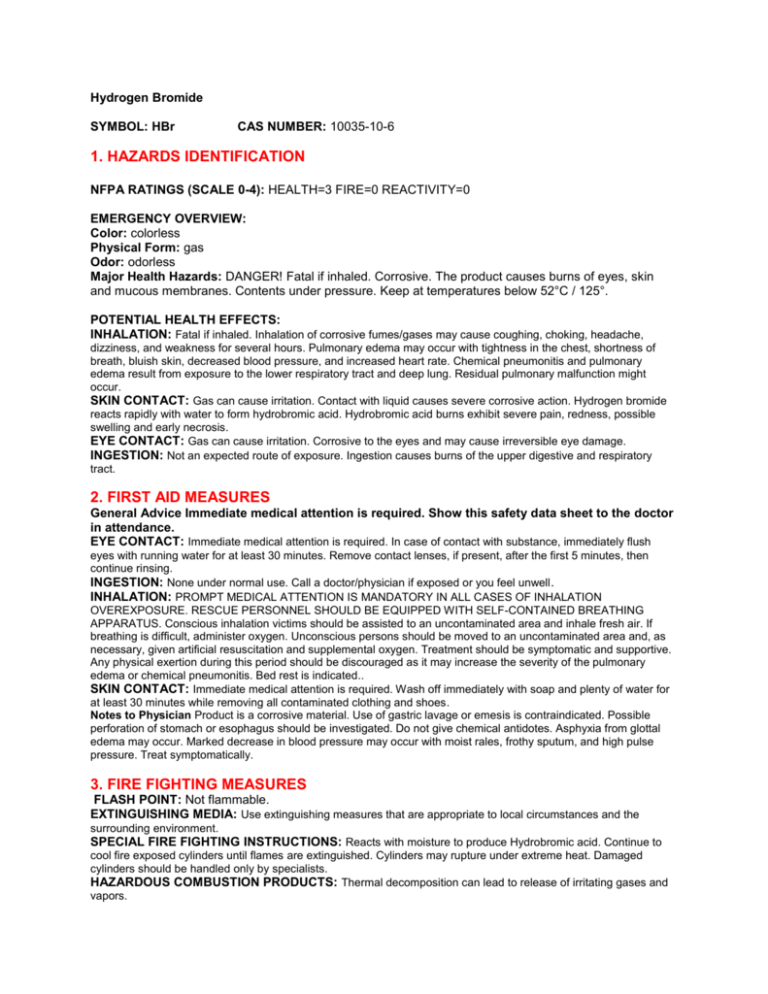
Hydrogen Bromide SYMBOL: HBr CAS NUMBER: 10035-10-6 1. HAZARDS IDENTIFICATION NFPA RATINGS (SCALE 0-4): HEALTH=3 FIRE=0 REACTIVITY=0 EMERGENCY OVERVIEW: Color: colorless Physical Form: gas Odor: odorless Major Health Hazards: DANGER! Fatal if inhaled. Corrosive. The product causes burns of eyes, skin and mucous membranes. Contents under pressure. Keep at temperatures below 52°C / 125°. POTENTIAL HEALTH EFFECTS: INHALATION: Fatal if inhaled. Inhalation of corrosive fumes/gases may cause coughing, choking, headache, dizziness, and weakness for several hours. Pulmonary edema may occur with tightness in the chest, shortness of breath, bluish skin, decreased blood pressure, and increased heart rate. Chemical pneumonitis and pulmonary edema result from exposure to the lower respiratory tract and deep lung. Residual pulmonary malfunction might occur. SKIN CONTACT: Gas can cause irritation. Contact with liquid causes severe corrosive action. Hydrogen bromide reacts rapidly with water to form hydrobromic acid. Hydrobromic acid burns exhibit severe pain, redness, possible swelling and early necrosis. EYE CONTACT: Gas can cause irritation. Corrosive to the eyes and may cause irreversible eye damage. INGESTION: Not an expected route of exposure. Ingestion causes burns of the upper digestive and respiratory tract. 2. FIRST AID MEASURESGeneral Advice Immediate medical attention is required. Show this safety data sheet to the doctor in attendance. EYE CONTACT: Immediate medical attention is required. In case of contact with substance, immediately flush eyes with running water for at least 30 minutes. Remove contact lenses, if present, after the first 5 minutes, then continue rinsing. INGESTION: None under normal use. Call a doctor/physician if exposed or you feel unwell . INHALATION: PROMPT MEDICAL ATTENTION IS MANDATORY IN ALL CASES OF INHALATION OVEREXPOSURE. RESCUE PERSONNEL SHOULD BE EQUIPPED WITH SELF-CONTAINED BREATHING APPARATUS. Conscious inhalation victims should be assisted to an uncontaminated area and inhale fresh air. If breathing is difficult, administer oxygen. Unconscious persons should be moved to an uncontaminated area and, as necessary, given artificial resuscitation and supplemental oxygen. Treatment should be symptomatic and supportive. Any physical exertion during this period should be discouraged as it may increase the severity of the pulmonary edema or chemical pneumonitis. Bed rest is indicated.. SKIN CONTACT: Immediate medical attention is required. Wash off immediately with soap and plenty of water for at least 30 minutes while removing all contaminated clothing and shoes. Notes to Physician Product is a corrosive material. Use of gastric lavage or emesis is contraindicated. Possible perforation of stomach or esophagus should be investigated. Do not give chemical antidotes. Asphyxia from glottal edema may occur. Marked decrease in blood pressure may occur with moist rales, frothy sputum, and high pulse pressure. Treat symptomatically. 3. FIRE FIGHTING MEASURES----------FLASH POINT: Not flammable. EXTINGUISHING MEDIA: Use extinguishing measures that are appropriate to local circumstances and the surrounding environment. SPECIAL FIRE FIGHTING INSTRUCTIONS: Reacts with moisture to produce Hydrobromic acid. Continue to cool fire exposed cylinders until flames are extinguished. Cylinders may rupture under extreme heat. Damaged cylinders should be handled only by specialists. HAZARDOUS COMBUSTION PRODUCTS: Thermal decomposition can lead to release of irritating gases and vapors.
